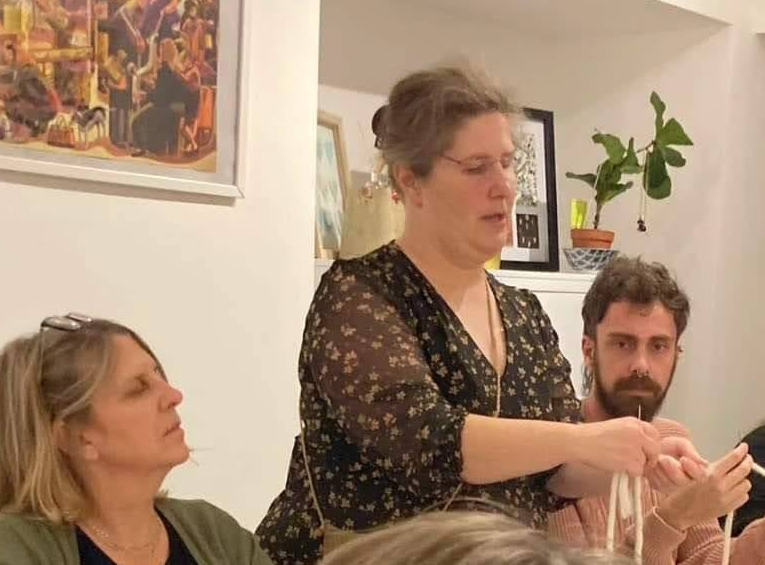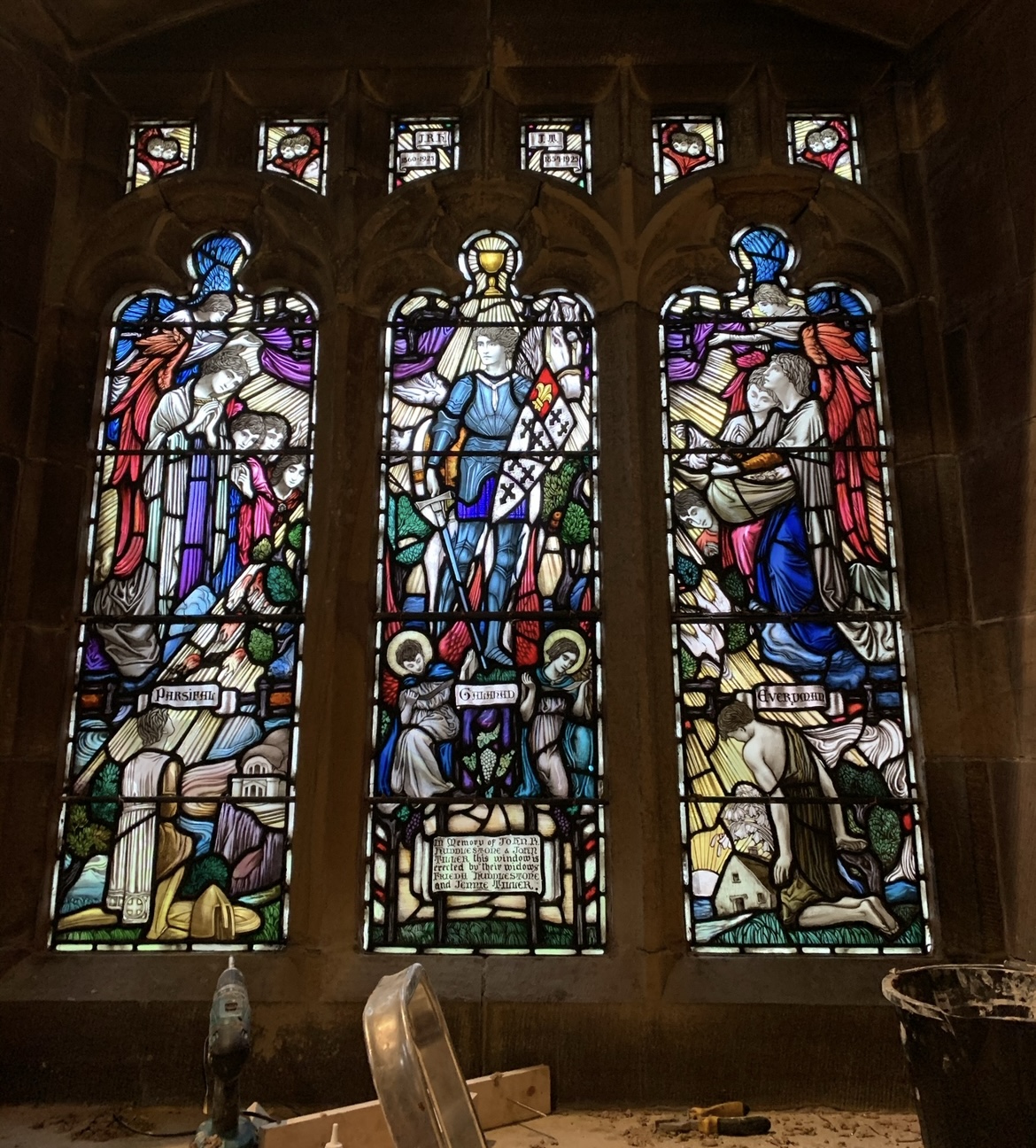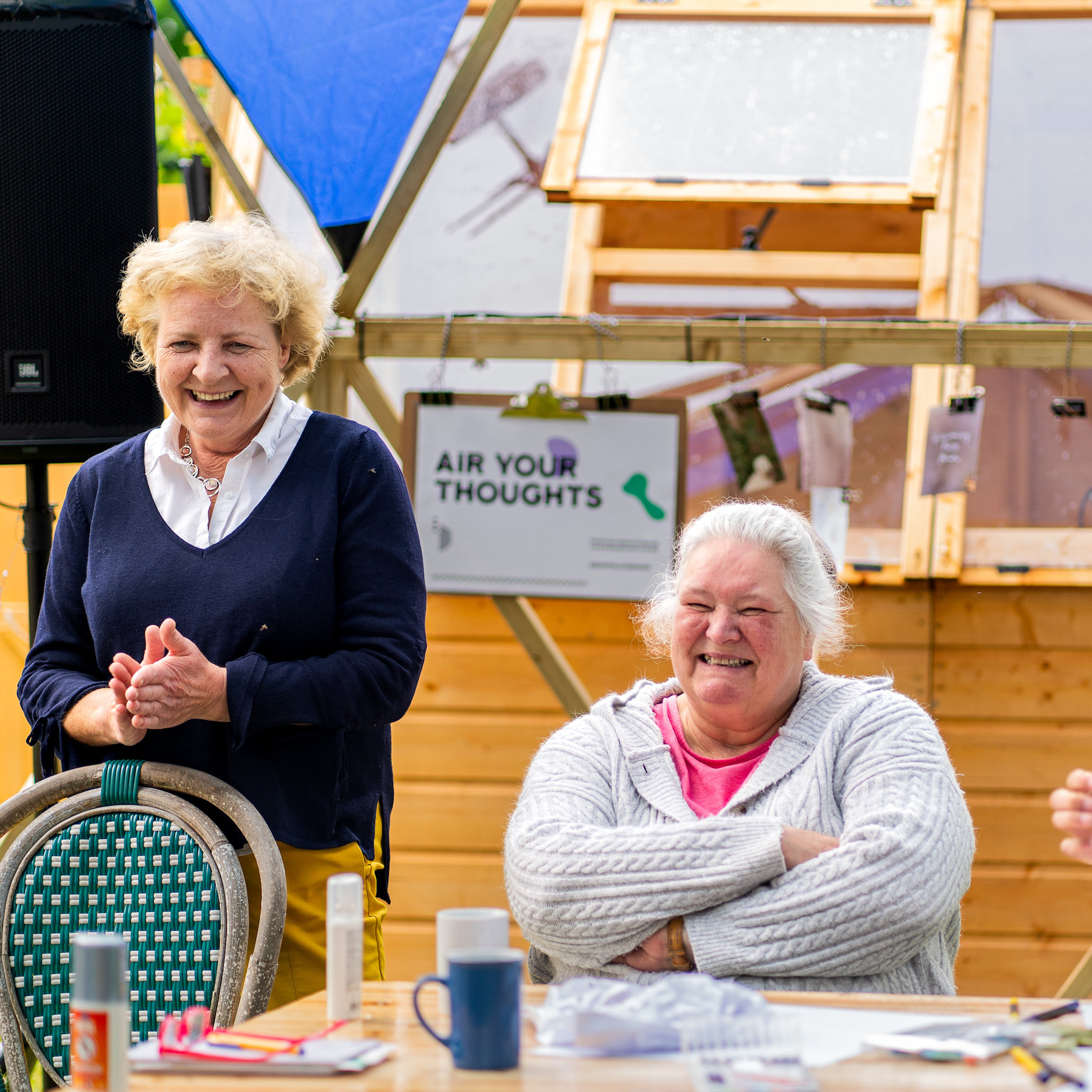The lost arts keeping Blackpool thrifty
“Letterpress printing, typography, etching, sign writing, fairground art, which is close to my heart being in Blackpool – all the skills that I love and have been working with throughout my career are now on the Red List.”
In a world where you can pick up a cheap cocktail dress at the supermarket along with the ingredients for tonight’s tea, it’s hard to imagine anyone bothering to darn their clothes anymore.
Yet Blackpool-based crafter Heather Brewster does just that, using a millennia-old technique called nålbinding.
What’s more, as the cost of, well, everything increases, she says more and more people are keen to learn how to mend their belongings.
Nålbinding, which uses a pointed needle to create a series of loops of thread, is just one of a number of techniques Brewster teaches in her Kilgrimol Crafts workshops at Blackpool’s Aunty Social community arts centre. Many of these are on the Red List of 146 endangered skills, put together by national charity Heritage Crafts.

The list was revised last year, when five new crafts, including straw hat making and encaustic tile making, were added to the ‘critically endangered’ category, meaning they are likely to die out within the next generation. Meanwhile, violin bow making, hat block making and four others were reclassified as in greater danger than they had been two years earlier when the last report came out.
Brewster is just one of a number of practitioners keeping heritage crafts alive in Blackpool, alongside stained glass window makers, printmakers and glass blowers. Her first foray into crafting was soaking nettles to retrieve their fibres on the farm over Wyre where she grew up, and she believes traditional skills give people a vital connection with the natural world around them.
Blackpool bucking the heritage craft trend
While many heritage crafts are under threat, or already lost, she sees a renewed interest from Blackpool residents.
“I do think there are people that are really interested in mending their own clothes, for instance, and getting away from fast fashion,” says Brewster, who also demonstrates crafts at fairs and Viking reenactments.
“It’s amazing – I’lI do a massive thing, weaving baskets or something like that, and a small child will be more interested in me putting a sleeve back on a shirt or putting a button on – adults too.
“With nålbinding you're using fibres that are only about 2m long, so if you're in a field and you need to repair something you can use the environment around you. You can just pluck grass and start using it.”
For some people, heritage crafts provide a link to lost family members.
“I had a lady who was in her 80s,” says Brewster. “She was saying she remembered her grandmother doing nålbinding but she’d never done it herself before.”
While some crafts are seeing a revival, others are becoming more threatened, often due to the knock-on effect of other skills being lost.
Stained glass under threat
New to the Red List is the making and restoration of historic stained glass windows, which was considered newly at risk when the related skill of mouth-blown flat glass became extinct in the UK in 2022.
Stained glass making is alive and well in Blackpool though, where Aaron Whiteside has been creating a name for himself as the restorer of the huge, arched windows in Blackpool Tower.
“They were in such bad condition,” he says. “They’d had drainpipes put through them and most of them were missing so it was about working out how to keep what was there, adding restoration glass in and rebuilding them back to the original state.”

Whiteside does make brand new windows, some to his own designs, but it’s the heritage work he is most passionate about. He has restored the windows in a number of churches in Blackpool, including St John’s, Holy Cross and St Stephen’s, as well as the shop fronts for Winter Gardens complex, which are to a new design using historic glass in keeping with the original style of the Victorian building.
“My heart lies in restoration,” he says. “I love seeing a smashed window like the tower – or like the job I’ve done this week when some kids slammed a door and the window flew out – and being able to put it back together to how it looked before.
“It's a challenge. Say the job takes you a month, you spend every night worrying about it. You think, why am I doing this? But when you get the result, and you've managed to put something back as it was, then it's worth all the worry in the world.”
Whiteside’s love of vintage design extends to his home, a 1930s semi-detached house which he has decorated with period wallpaper, furniture and accessories so that stepping inside is like stepping back in time.
He fell for the house as a boy, when he lived just over the road, and it was owned by a formidable elderly woman called Mrs Parkinson.
“She was about 103 when she died here, and she was an old stickler. She was obviously an old headmistress, and if the balls came in the garden she'd go out and pop them with a knife. Everyone was scared of her and we’d call it the witch’s house.”
But it was Whiteside’s interest in stained glass that won him his future home. After Mrs Parkinson died, the house passed to her brother and was left empty for many years.
When Whiteside’s brother kicked a football through one of the stained glass windows, Aaron had a go at fixing it. Years later, the owner recalled his act of kindness and, hearing that he couldn’t afford to pay market value for the house, offered it to him at a price he could manage.
Listening to Whiteside talk about the demand for his work, it’s hard to appreciate that stained glass making is “endangered”.
Domestic stained glass fell out of fashion with the rising popularity of minimalism, but now Aaron is receiving an increasing number of requests to replace it in homes where it was removed. Six years ago, he says, his work would centre around the wealthier town of Lytham but now he has jobs in Blackpool homes too.
The craft’s place on the Red List has less to do with demand than a lack of training opportunities for younger people as its skilled practitioners head into retirement.
While Whiteside spent six years perfecting his craft at Poulton-le-Fylde-based Daedalian Glass Studios, and says he would happily train an apprentice, he isn’t sure that would actually be possible.

“If someone came up to me and said, ‘Could you teach someone?’ I'd say yeah, but I’d have to charge because I work hand-to-mouth,” he says.
“The problem is you can show someone how to put glass and lead together, but you've also got to have a depth of knowledge about the history of glass and what glasses go where.
“The only way anyone could learn from me is to be an apprentice on-site, but then I couldn't afford to pay them.”
Whiteside’s not alone in this conundrum. Heritage Crafts identified rising costs as another reason for skills to become endangered.
Blackpool-based glass blower John Ditchfield of Glasform has seen a huge increase in the price of fuel and materials over recent years that makes turning a profit challenging.
“Our prices are rocketing – fuel and also our raw materials from Germany with no option to source them elsewhere,” he says. “Our fuel bill has gone up almost £1,000 pounds a week. We're only a small company – there are only two of us making glass.”
Ditchfield fell into the industry by chance in 1967 at the age of 15, after seeing an advert in a local paper wanting art students for a summer job.
“I wasn't an art student and I wasn't looking for a summer job. I needed to work because I was living by myself,” he says.
He showed up regardless and stayed for seven years, learning the basics of Venetian glass blowing from Franco Toffolo, an Italian who spoke no English.
“I just watched what he did very carefully and tried to copy him in my break times,” says Ditchfield.
They made clown ornaments that were sold on Blackpool promenade, pieces that were unusual in the UK at the time when most glass blowers created drinking glasses and decanters.
Later, Ditchfield went to Germany, Switzerland and France to develop his skills further, before returning to Lancashire where he founded his business Glasform in a farm house in Poulton-le-Fylde.
His favourite jobs are large-scale architectural projects, which include Princes Square in Glasgow and Birmingham’s Bull Ring, as well as Whitegate Drive health centre for which he created four chandeliers each made of 40 pieces of glass and a three-tonne bunch of balloons that spans three-storeys.
Ditchfield has sold art pieces all over the world and has even created them for celebrities, including Tina Turner, Frank Bruno, Richard Branson, the queen and Princess Anne.
He has made a Persian teardrop vase for Elton John and a flurry of bubbles in claret and royal blue for West Ham supporter Ray Winston.
Despite his success, Ditchfield says running a glass blowing business can be challenging.
“It's very hard to work for yourself because of the expenses. You’re virtually married to the furnace because it’s never turned off.
“Even when we close for two weeks over Christmas, the furnace is still running. If it gets too cold too quickly, the tank which holds the glass cracks and breaks up. Then it’s time to build a new furnace.”
Ditchfield has had apprentices in the past but none of them have stuck at it for more than a few years.
“You spend a lot of time on them and then they decide they don’t want to do it anymore so you go back to square one.”
For Lisa Wigham, whose many skills include bookbinding, printing and sign-painting, the Red List is a call to action. Determined not to let them disappear, she teaches her crafts around the Blackpool area including at the newly opened Showtown museum.
“These crafts will die out in the next generation if nobody propagates them, and that's quite shocking.
“Letterpress printing, typography, etching, sign writing, fairground art, which is close to my heart being in Blackpool – all the skills that I love and have been working with throughout my career are now on the Red List.”
The support of local arts organisations will be vital if these crafts are to survive, says Wigham, who finds it hard to juggle making her own work with the logistics of organising teaching sessions.
“We need people in organisations who are going to appreciate the amount of labour involved in what we’re doing and to help us to provide specialist workshops or community art projects,” she says. “If we're going to really share these heritage skills, we need to do it in a focused way, showing how people can use them and that they can be relevant in their modern lives. We can't live in a bubble – we've got to integrate and be seen as having a function in giving people a voice, a sense of self expression, for people to say, ‘Oh, I really want a nice sign for my allotment, I'm going to make it’.”
Like what we do at The Lead? See all the ways you can support our journalism from making a one-off, or regular, contribution through to browsing our online shop for t-shirts, mugs and more.
A part of Blackpool's identity
Saving heritage crafts is saving a crucial part of our identity in Blackpool, says Wigham.
“It’s part of our local vernacular. It makes people feel proud when they have a connection to a place,” she says. “Being in Blackpool, there's often not a lot on the high street that cheers people. When we walk out we see things that make us feel sad and ashamed of how our town just seems to have eroded in front of our eyes.
“Incrementally, I do believe that artists’ projects can really help with morale boosting and making people feel like there's a path for them to follow in the town – to see something that's been made with pride, created by a group of people putting the extra effort into wanting to improve things.”
How to get involved in heritage crafts in Blackpool
For more information on the Kilgrimol Craft workshops
Upcoming workshops by Lisa Wigham and sign painting.
You can see the previous newsletter we sent to our subscribers here
The Blackpool Lead is now on Substack.
Become a Member, and get our most groundbreaking content first. Become a Founder, and join the newsroom’s internal conversation - meet the writers, the editors and more.





